Yesterday at 21:28, 34 594 views Finally Apple gave in under the pressure of big screens and released their fablet. Model was called iPhone 6 Plus and has a 5.5 inch screen. In turn, Samsung, company ancestor planshetofonov, once again updated its line Note, releasing GALAXY Note 4 . We were able to see both new products and are willing to share with the readers Hi – Tech. Mail. Ru first impressions .
• Print
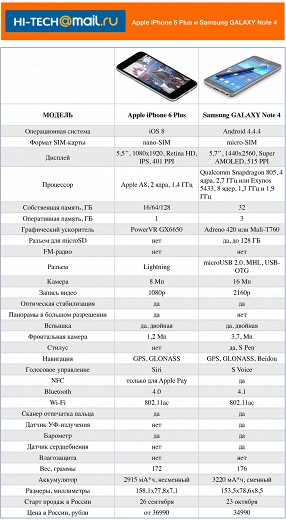
Click on table to enlarge
The segment sets with screen sizes over 4.5 inches – it is more than half of the smartphone market. With the advent of Apple, he will rise considerably, and will dominate. But not so simple when it comes to models with displays over 5.5 “. Yet the physical size for many restrictive. In addition, historically in this segment is very strong company Samsung, which his series GALAXY Note captured the whole high-price segment, leaving competitors only less profitable niches available models.
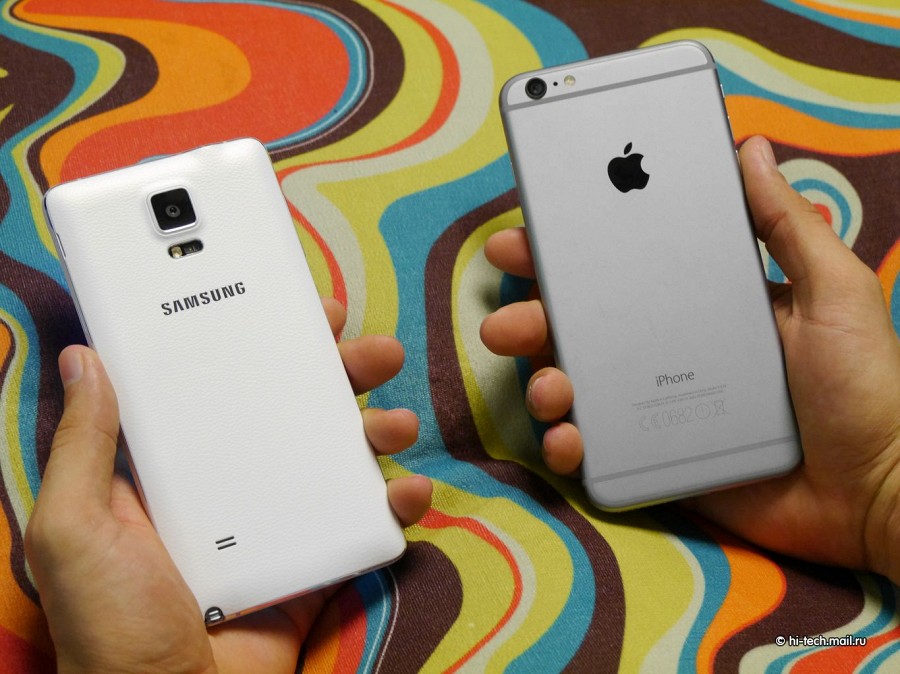
Apple iPhone 6 Plus – the first smartphone that will be a real competitor to the popular series of Samsung GALAXY Note.
Apple iPhone 6 Plus – the first smartphone that will be a real competition on sales Samsung’s high-end segment fabletov (smartphones with large screens). He compares favorably with all-metal housing and well-optimized software developed ecosystem. While technically ahead GALAXY Note 4, and almost all the characteristics – screen, camera, time, etc. For about the same price model: in Russia novelty Apple officially be sold from September 26, from 36 990 rubles (unofficial prices) and smartphone Samsung – October 23 in 34 990 rubles .
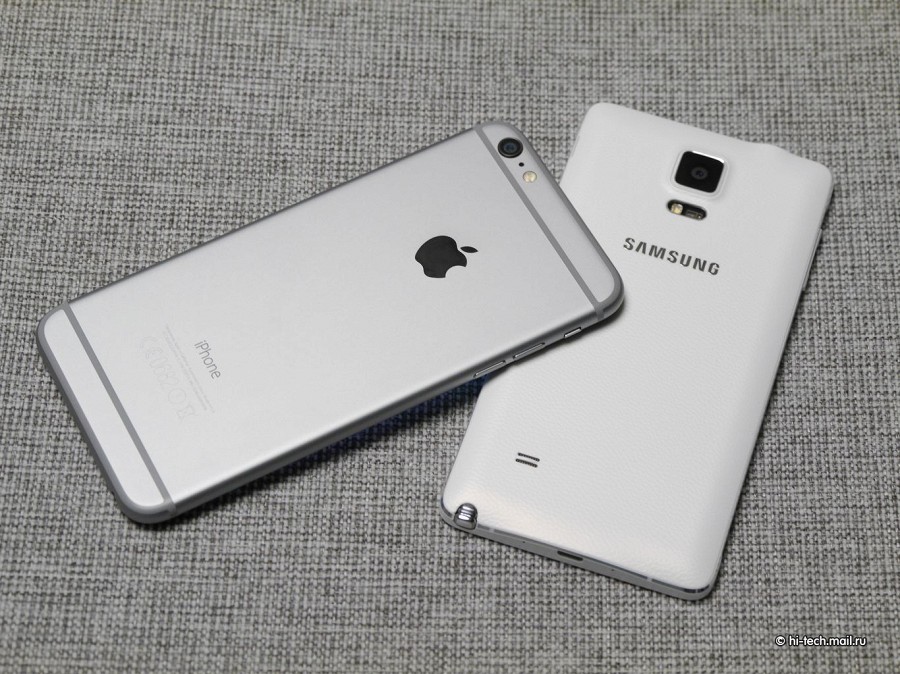

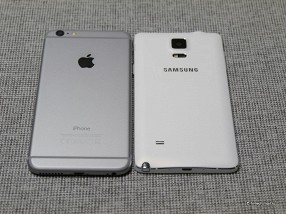
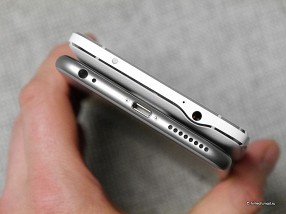
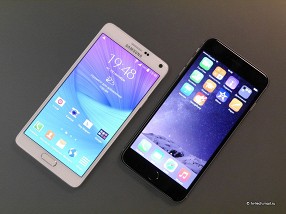
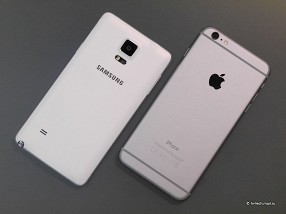
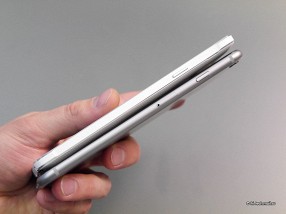
Design – subjective parameter. In my opinion, both devices are not standards of beauty. Samsung added a metal frame, but for some reason, covered it with paint in body color. If this is the black version looks good, the white is not very much. In this case, the rear left plastic under the skin, which not everyone likes. In turn, Apple has refused from the strict lines and made a round body with a thick plastic lines and protruding camera is also very controversial approach (in contrast to the stylish HTC One, made in the same vein, the design). And if the Koreans never shone design, the Apple’s fans were not expecting such a decision in the finals to the last hope of the Chinese prototypes in Cupertino improve and change, but alas. However, once again, the design – it vkusovschina, each for himself decides that he likes.

Apple iPhone 6 Plus compares favorably with all-metal housing. Thanks to the rounded edges it better in the hand and pocket.
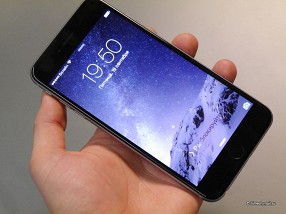

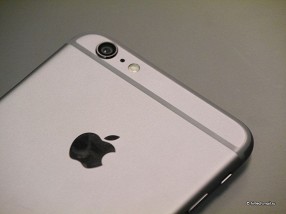
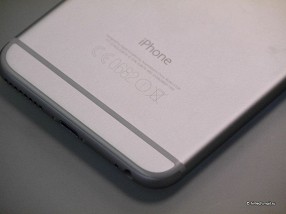
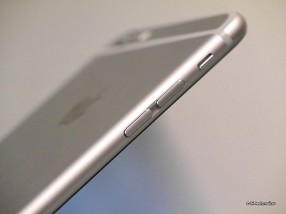
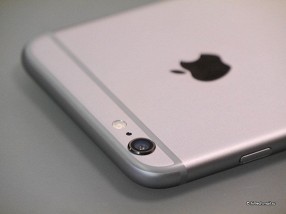
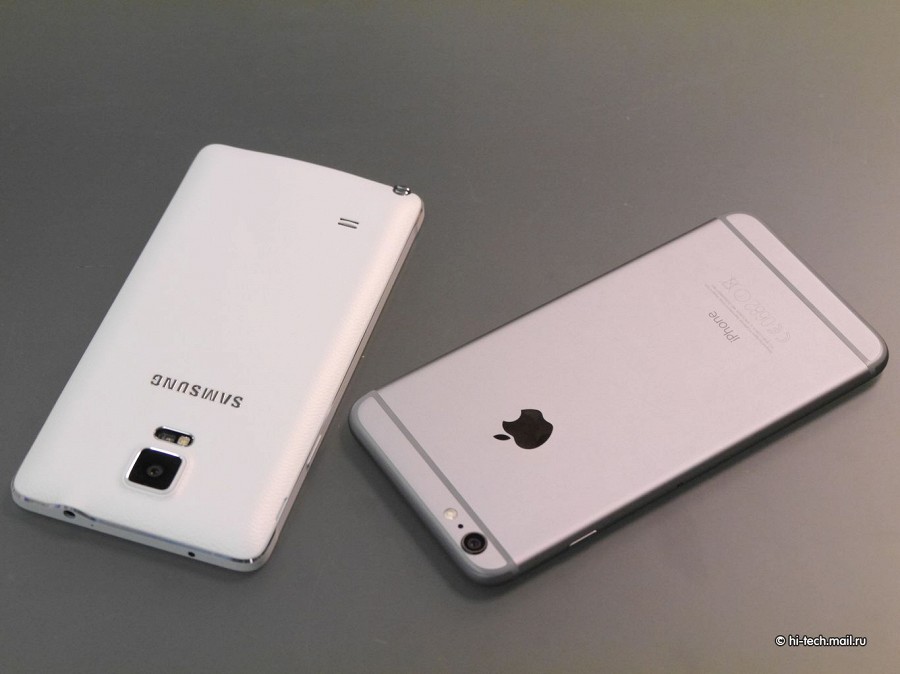
What objectively, it’s size and weight: Samsung GALAXY Note 4 – 153,5 x 78,6 x 8,5 mm, 176 grams, iPhone 6 Plus – 158,1 x 77,8 x 7,1 mm, 172 grams. As you can see, this model is very similar. The Samsung is a little thicker, but it gave an opportunity to establish a little more capacious battery: iPhone 6 Plus – 2915 mAh, GALAXY Note 4 – 3220 mAh, ie Koreans have almost 10% more. Also, the GALAXY element traditionally removable, and there is support for fast charging. On the first sensations, Note 4 working longer. It seems that jokes about Android and iOS is time to change the system in some places. But let’s not jump to conclusions, detailed tests of autonomy we will later. Our sample of the new GALAXY Exynos, and this processor is good for energy efficiency, plus the screen is more economical technology Super AMOLED. So you can expect great results, despite the QHD resolution that isportiloavtonomnost in LG G3. Will not go away from Samsung memory card support. But the iPhone 6 Plus built-in volume up to 128 GB, while in Note 4, only 32 GB.
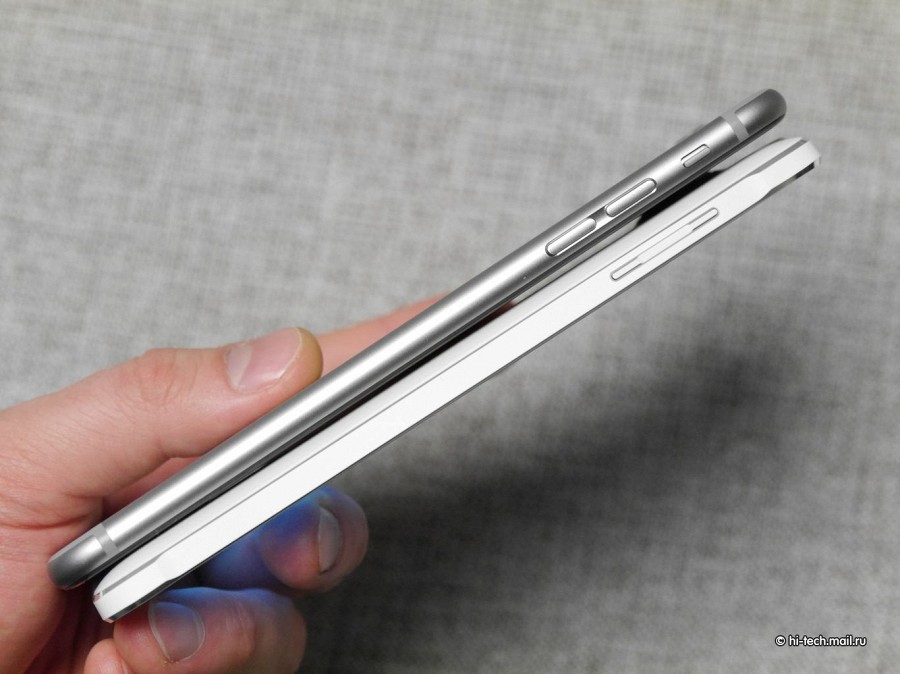
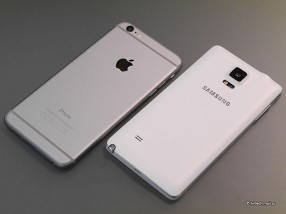
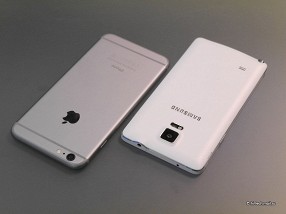
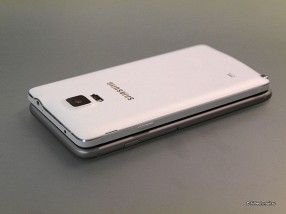
RAM contrary Samsung’s more – 3 GB (compared to 1 GB from Apple). He wins and the power of the chip. American smartphone features a 64-bit processor A8, it is a dual-core processor with a clock speed of 1.4 GHz. Koreans quad Qualcomm Snapdragon 805 with a clock speed of 2.7 GHz or eight-core Samsung Exynos 5433 1.9 GHz (two versions). Proprietary interface Samsung TouchWiz is not as nimble as a system of iOS, which is understandable – makes itself felt optimization. But Android allows you to optionally change everything beyond recognition, here plnaya freedom, which is impossible in iOS. But on the side of the Apple ecosystem and speed. A new iOS version 8 has added a few features Android (widgets, third-party keyboards, etc.). In general, there is a matter of taste.
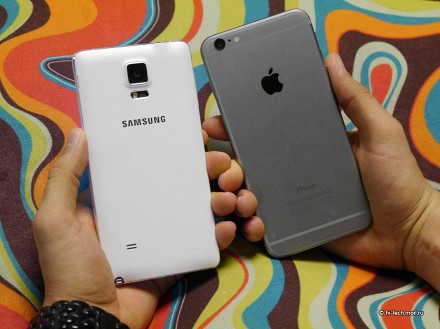

Screen GALAXY Note 4 – this is the biggest plus of the smartphone Samsung. He’s very good.
Screen GALAXY Note 4 – this is the biggest plus of the smartphone Samsung. He’s very good. 5.7-inch Super AMOLED display with a resolution of 2560 by 1440 pixels on a background of 5.5-inch IPS-display with a resolution of 1920 x 1080 pixels (401 ppi), contrast ratio 1300: 1, a maximum brightness of 500 nits and oleophobic coating the iPhone 6 Plus. In reality, there is a sure leader Samsung. But even regardless of the quality of the matrix Full HD screens with a diagonal of 5.5 “- a controversial move Apple, Android-producers of this is relevant only in the middle class. It is a pity that the Americans have decided to save.
compare the screens (left Apple iPhone 6 Plus, right Samsung GALAXY Note 4):
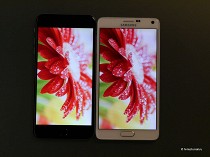
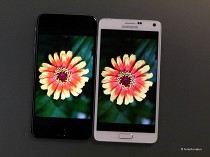
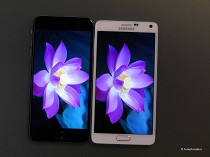
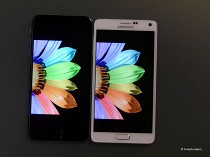


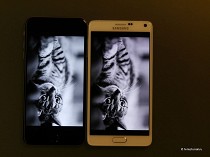
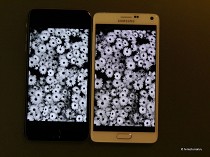
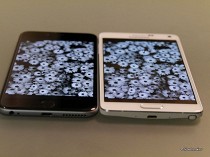

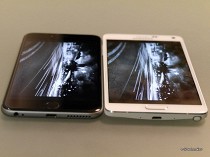

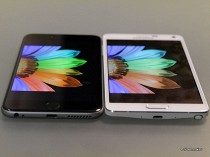
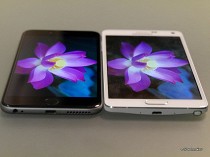
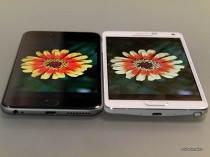
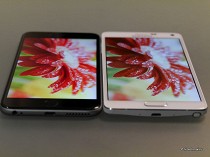
* Photos are for illustration. The results of objective testing screens can be found below. Brightness iPhone 6 Plus is higher than in Note 4, so that the photographs should not make any conclusions.
A detailed comparison of screens held our expert Mikhail Kuznetsov:
The screen Samsung GALAXY Note 4 uses advanced technology AMOLED – an array of self-illuminating OLED. Diagonal is 5.7 inches, and resolution – 2560×1440 (Quad HD). This provides the pixel density at 515 ppi.
Screen iPhone 6 Plus is based on a more conservative technology – then installed 5.5-inch LCD matrix IPS. Resolution 1920×1080 (Full HD) provides a pixel density of 401 ppi. Maybe on paper, you can fix a “loss”, but in reality, the difference between 401 ppi and 515 ppi is not a big deal – both devices a high enough resolution to not apparent pixelation. Full HD resolution is more than enough for mobile screens, which used a relatively small diagonal.
compare the brightness characteristics: maximum brightness Samsung was 334 cd / m 2 , if we talk about white fill the entire screen. But if the area of the white filling is reduced to at least 50%, the brightness is clearly growing – already up to 370 cd / m 2 . As it turned out, this is not the limit! If we translate the screen to automatically adjust the brightness and smartphone will be exposed to bright light (eg the sun) – that the brightness can grow to an impressive 620 cd / m 2 . Add to that the excellent efficacy of anti-reflective coating and conditionally “infinite” contrast AMOLED zero black – and you get an amazing combination. Note 4 on the screen live, deep and realistic picture under any lighting conditions.
The maximum brightness of the iPhone 6 Plus, in turn, was 492 cd / m 2 . Contrast ratio achieved in 1300: 1 – as much as stated by the manufacturer. An effective anti-glare allows him to look good in direct light, and the viewing angles are very wide, even by the standards of IPS. Colors angle shifted slightly, only black color lightens when viewed diagonally.
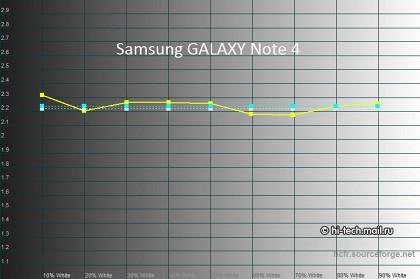

Gamma Adjustment Note 4 is not satisfactory. The average value of – 2.24, the rate of linear and close to the standard. Average gamma iPhone 6 Plus – 2,28. Here, too, no problems, everything is very close to the standard.

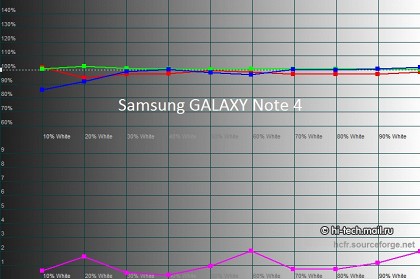
The average color temperature Note 4 is close to the reference value of 6500K. Note 4 color balance in the “main” is set perfectly. Most eloquently confirmed by the mean value of the error Delta E value of 1.07 units. Grayscale visually smooth, color distortions are not observed.
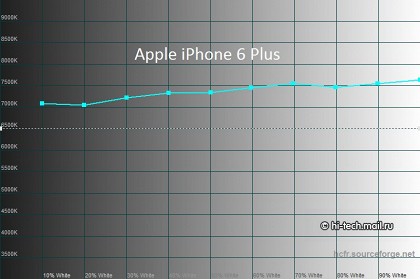
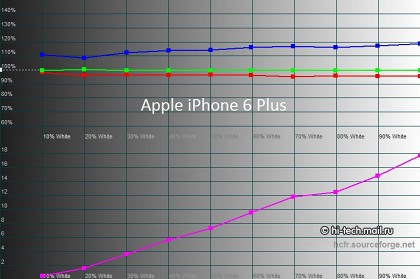
The average color temperature iPhone 6 Plus – about 7400K. Color balance shows that the image has a light bluish tint. The average error of Delta E on the gray scale – 8.5 units. Deviations tint get higher than that of the screen Note 4.
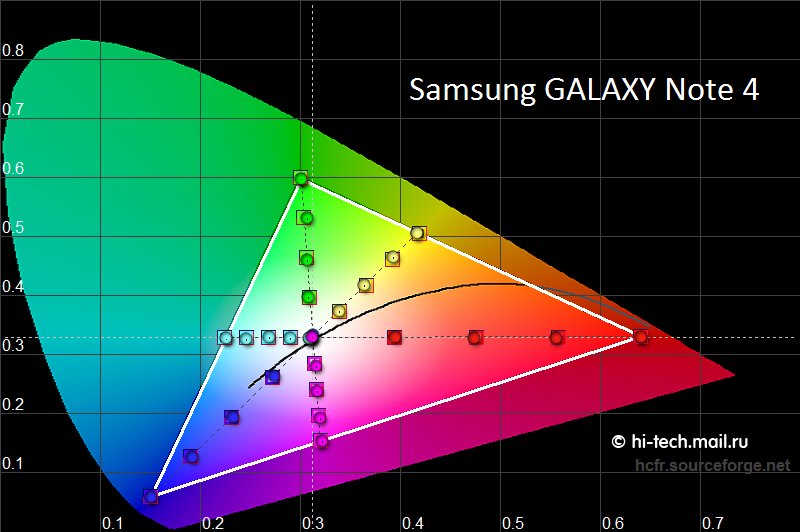
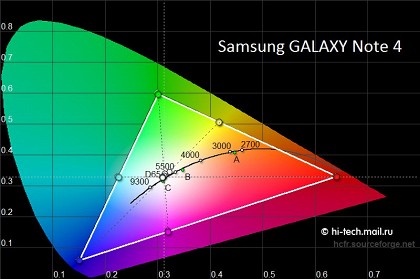
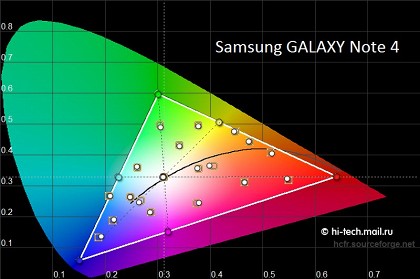
The color gamut of Note 4 in the “main” fully complies with sRGB, without any discounts and errors. Moreover, the intermediate color values lie practically on the reference values - the minimum error. Total score of 24 color patterns ColorChecker gives an average error of Delta E value of only 1.22 units.
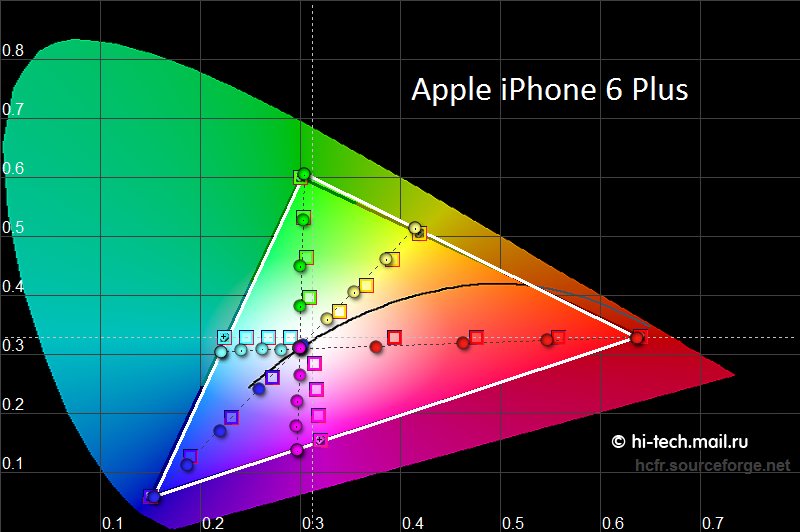
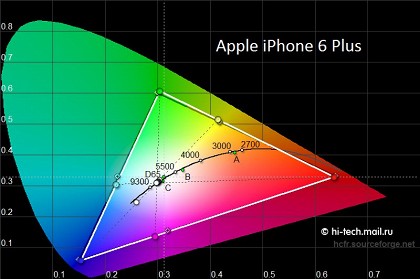

The color gamut of iPhone 6 Plus is to be expected “locked up” under the standard sRGB for accurate color reproduction. The company has long paid attention to this, and we must pay tribute to Apple for understanding the importance of this condition. Thus, the color gamut of the iPhone 6 Plus and Note 4 is almost identical, but the main differences were found “inside” the triangle. Intermediate gradations on the iPhone 6 Plus is somewhat distorted due to the blue of the impurity can not be said about the Note 4. Overall Score color iPhone 6 Plus 24 templates ColorChecker gives the average error in the Delta E value of 3.52 units. Factory setting of color adequate, though not without some flaws.
Unbelievable but true: AMOLED-display Samsung GALAXY Note 4 has almost standard setting, if we talk about “Basic” mode. Color accuracy went perfect, the images are very vivid and realistic. The combination of excellent brightness characteristics and high-quality color without the extra “tricks” makes the screen Note 4 benchmark for other flagships, including the Apple iPhone 6 Plus.
In this comparison AMOLED display technology sets the highest level of quality, although the lag screen Apple iPhone 6 Plus is not too big. In fairness, I note that both screens are very good quality and clearly like the fans of these devices.
maximum brightness in cd / m 2
The average gamma (target 2.2)
The average error of Delta E (gray scale)
The average error of Delta E (ColorChecker®)
Apple iPhone 6 Plus is equipped with an updated 8 megapixel camera (pixel size – 1.5 micron aperture – f / 2.2) with an advanced autofocus system. It can shoot panoramic photos up to 43 megapixels and record Full HD video at 60 frames per second, and slo-mo video at up to 240 frames per second (720p). There is optical image stabilization system. Front-facing camera – only 1.2 megapixels with an aperture of f / 2.2, and support for HD-video recording. At Samsung GALAXY Note 4 has a 16-megapixel main camera with a “smart” system of optical image stabilization and dual LED flash, front 3.7 megapixel camera with F1.9 aperture and a wide angle lens (for qualitative self). The quality of images we liked Samsung, see examples below.
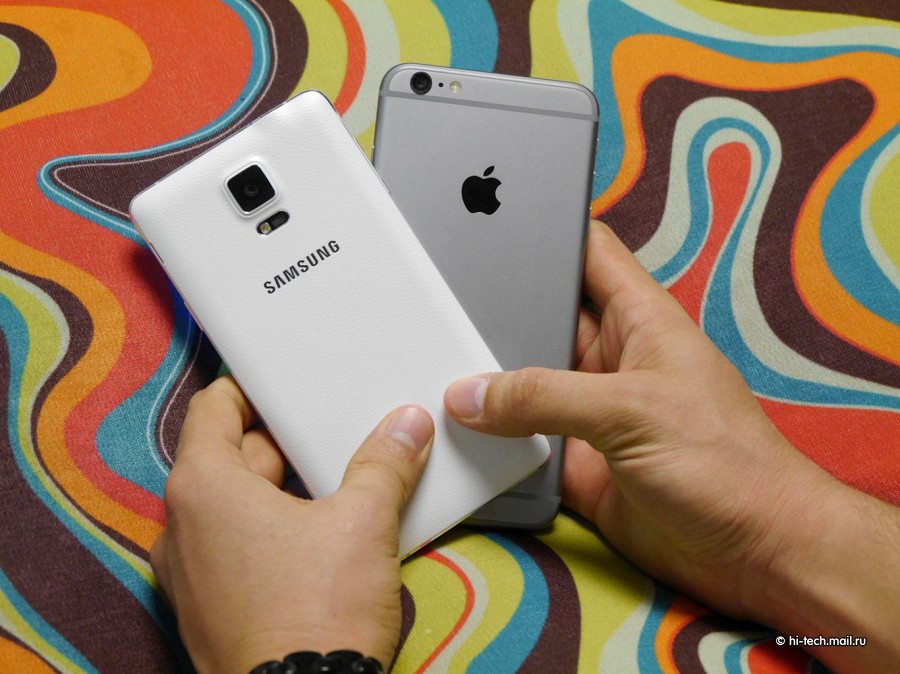
We invite you to compare the quality of photos in different conditions (left Samsung GALAXY Note 4 , right Apple iPhone 6 Plus):
– the day


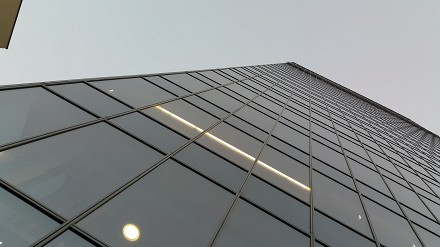
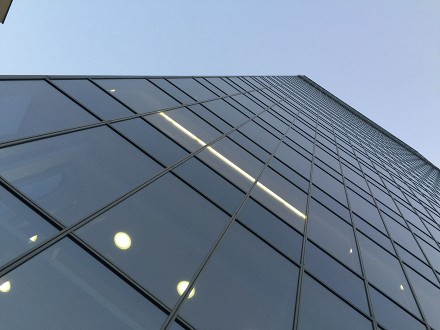

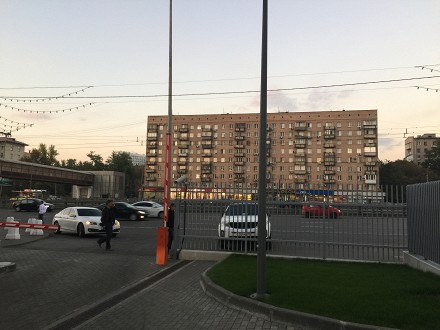
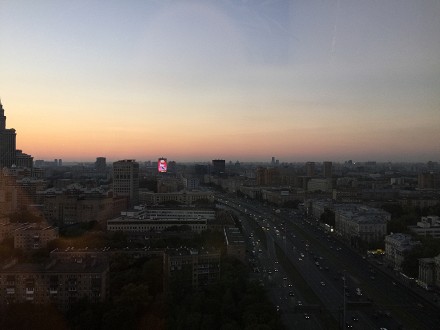



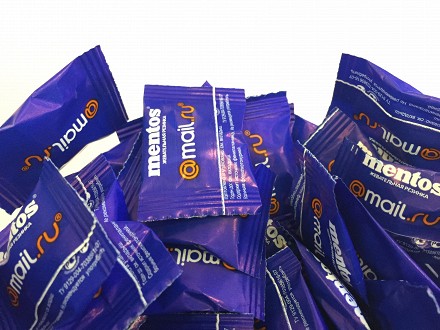
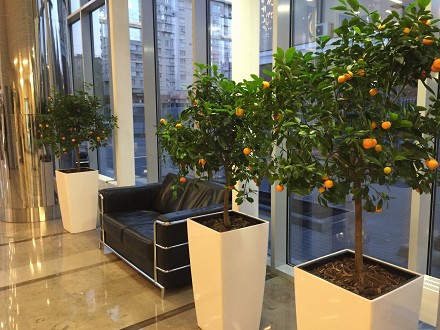



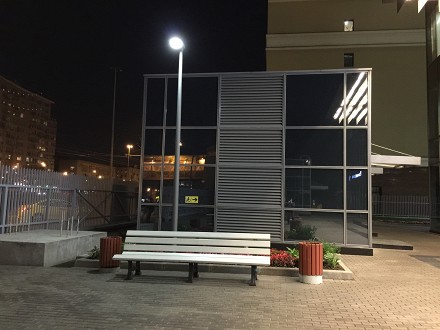

No comments:
Post a Comment